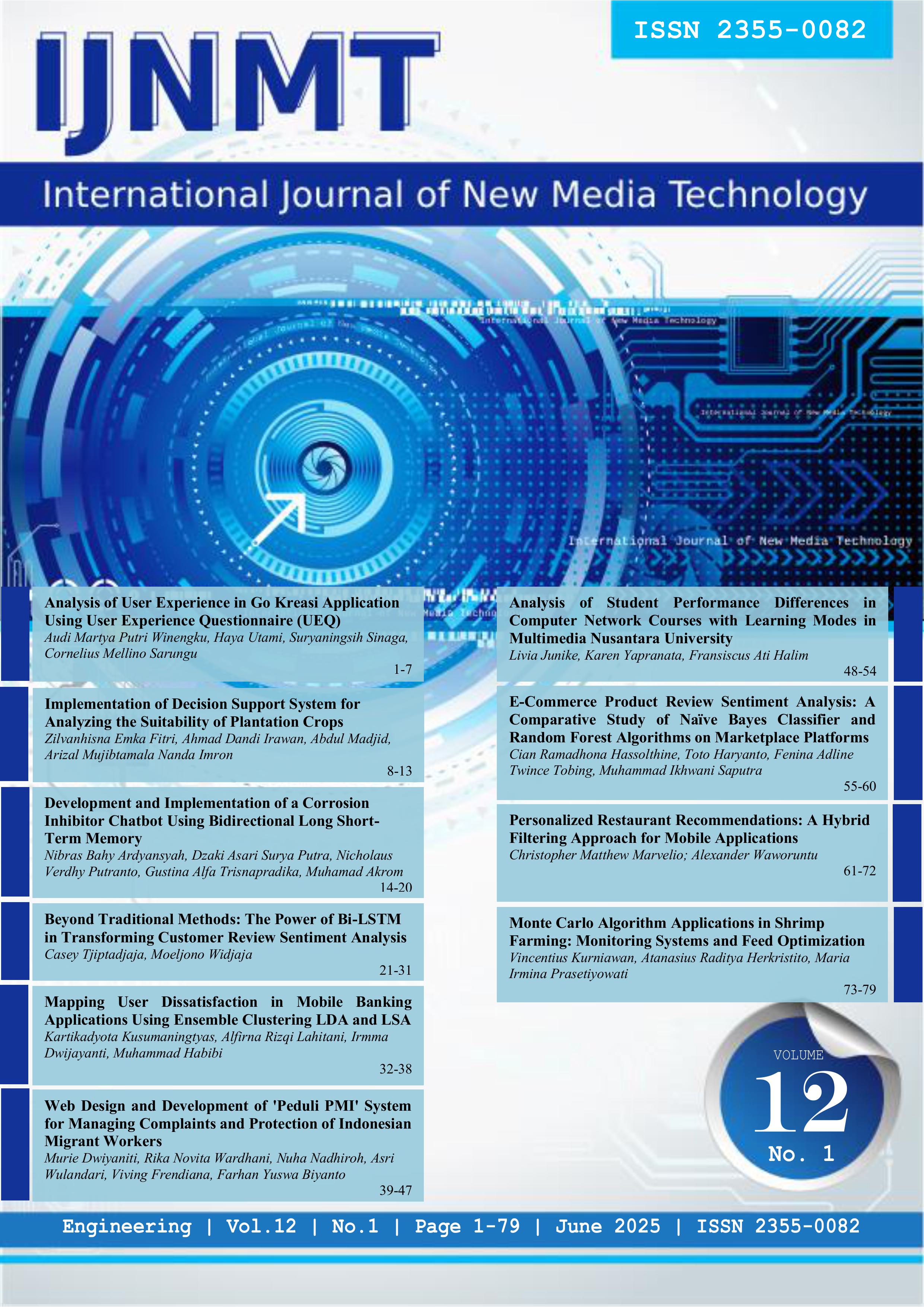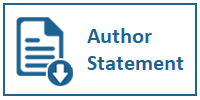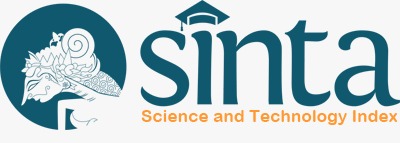Development and Implementation of a Corrosion Inhibitor Chatbot Using Bidirectional Long Short-Term Memory
DOI:
https://doi.org/10.31937/ijnmt.v12i1.3752Abstract
This research delves into the intricate phenomenon of corrosion, a process entailing material degradation through chemical reactions with the environment, causing consequential losses across diverse sectors. In response, corrosion inhibitors are a proactive measure to counteract this deleterious impact. Despite their paramount significance, public awareness regarding corrosion and inhibitors remains limited, necessitating intensified educational efforts. The primary focus of this study is developing a Chatbot system designed to disseminate information on corrosion, inhibitors, and related topics. Employing the Machine Learning Life Cycle model, a deep learning approach, specifically the Bidirectional Long Short-Term Memory (BLSTM) architecture, is utilized to construct an optimized Chatbot model. Post-training evaluation of the BLSTM model reveals noteworthy performance metrics, including a remarkable 100% accuracy rate and a substantial 92% validation accuracy over 100 epochs. Training and validation losses are reported as 0.2292 and 0.9342, respectively. In conclusion, the BLSTM algorithm is an effective tool for training and enhancing Chatbot models, ensuring commendable corrosion awareness and inhibition performance.
Downloads
Downloads
Published
How to Cite
Issue
Section
License
Copyright (c) 2025 Nibras Bahy Ardyansyah, Dzaki Asari Surya Putra, Nicholaus Verdhy Putranto, Gustina Alfa Trisnapradika, Muhamad Akrom

This work is licensed under a Creative Commons Attribution-ShareAlike 4.0 International License.
Authors retain copyright and grant the journal right of first publication with the work simultaneously licensed under a Creative Commons Attribution-ShareAlike International License (CC-BY-SA 4.0) that allows others to share the work with an acknowledgement of the work's authorship and initial publication in this journal.
Authors are able to enter into separate, additional contractual arrangements for the non-exclusive distribution of the journal's published version of the work (e.g., post it to an institutional repository or publish it in a book), with an acknowledgement of its initial publication in this journal.
Copyright without Restrictions
The journal allows the author(s) to hold the copyright without restrictions and will retain publishing rights without restrictions.
The submitted papers are assumed to contain no proprietary material unprotected by patent or patent application; responsibility for technical content and for protection of proprietary material rests solely with the author(s) and their organizations and is not the responsibility of the IJNMT or its Editorial Staff. The main (first/corresponding) author is responsible for ensuring that the article has been seen and approved by all the other authors. It is the responsibility of the author to obtain all necessary copyright release permissions for the use of any copyrighted materials in the manuscript prior to the submission.















